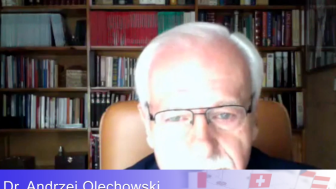Visions of Europe
Visions of Europe captures the parallel discourses about the future of Europe, as they unfolded between 1989 and 1999, through a series of focused interviews with leading European policy makers of the 1990s.

Explore more related to this collection
3
results

History and Public Policy Program
A leader in making key foreign policy records accessible and fostering informed scholarship, analysis, and discussion on international affairs, past and present. Read more



